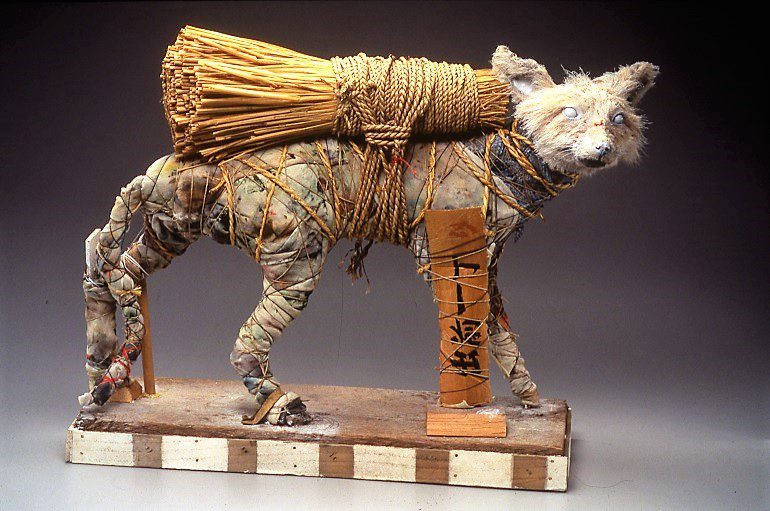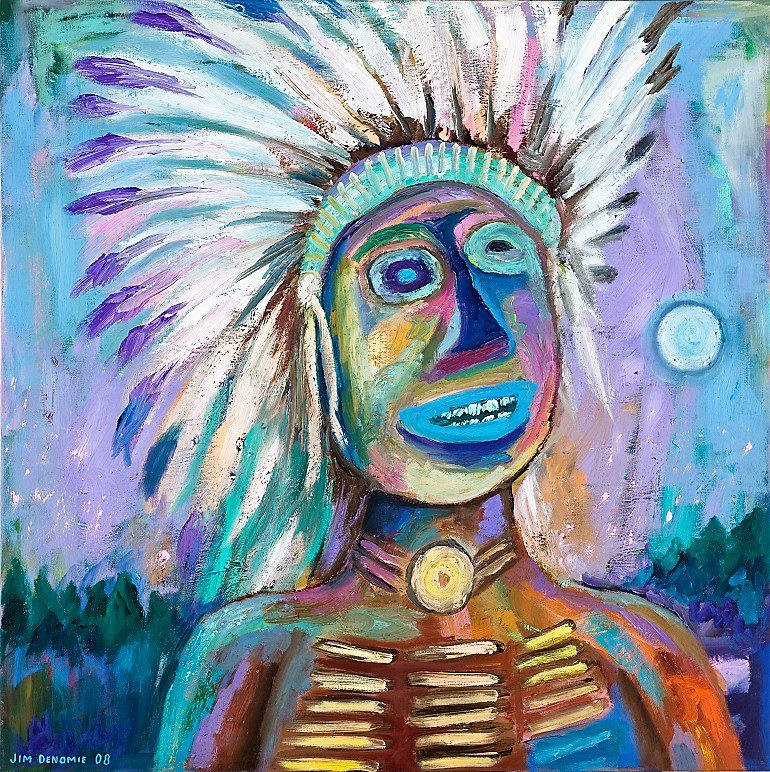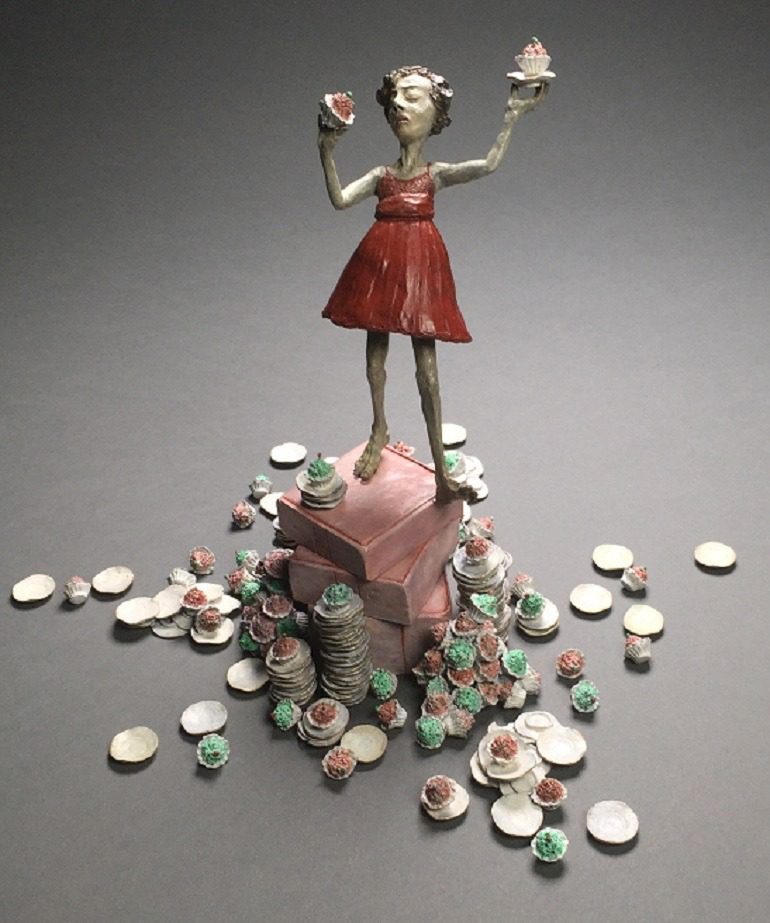ART NEWS
A Digital chromogenic print titled Anima by Native American artist Meryl McMaster on display at the Eiteljorg Museum as part of Native Art Now in Indianapolis.
ART REVIEW
Eiteljorg Museum of American Indians and Western Art is celebrating Native American Artists in an exhibition titled Native Art Now featuring amazing artworks collected over the years.
BY KAZAD
INDIANAPOLIS— The quest to bring attention to the work of Native American artists of the late 20th and early 21stcenturies is at the center of a major art exhibition at the Eiteljorg Museum of American Indians and Western Art. Titled Native Art Now, more than 39 contemporary Native American artworks of the past 25 years are presently on display as part of this important show. The works include installations, paintings, prints, sculptures, glass, and fabric art.
Many of the iconic works in Native Art Now were acquired primarily through the Eiteljorg Contemporary Art Fellowship. Some of the artists in this special exhibition include Truman Lowe, Allan Houser, Kay WalkingStick, Meryl McMaster and Nicholas Galanin among many others.
Native Art Now was developed by a team led by Jennifer Complo McNutt, the Eiteljorg’s curator of contemporary art. The show is the culmination of the museum’s more than two decades efforts to raise awareness of and build appreciation for works of Native American artists of the late 20th and early 21stcenturies. Native American art styles are varied and diverse as exemplified by this exhibition.
Meryle McMaster’s digital chromogenic print titled Plains Cree/Blackfoot Anima is one of the works captivating audience at the show. From the In-Between Worlds series, the photograph has the portrait of a woman. Covering the woman’s face are many beautiful and colorful butterflies. In the distance are two fleeting yellow butterflies. The image conjures a sense of spirituality and mysticism as the woman seems to navigate the threshold of the conscious and subconscious.
The divergence and convergence of two worlds in Anima exude mystery and mysticism. The location of the woman in the foreground of the photograph with all the butterflies on her face puts her in a conscious state, while the butterflies in the distance re/present her subconscious. The woman’s existence in the liminal space heightens an inexplicable ambiguity in the transition between cultures, traditions, and worlds. Clearly, Meryle is adept at using signifiers like props and sculpture to reference the complexities of the relationship between two worlds in her works. This is obvious in Plains Cree/Blackfoot Anima, where she brings attention to the story of migration and identity.
Like Meryle, Holly Wilson is adroit at using her works made up of tiny figures to tell stories. A multi-media artist, Holly weaves stories addressing the issues of race, gender, class, sexual orientation and ethnicity in many of her works. One of her works in this show is titled Enough. The 2015 bronze sculpture bought with funds from the Eiteljorg Fellowship tells the story of a woman who has had enough. Enough is the sculpture of a woman in a beautiful red dress standing on three pizza-like boxes. In her hands are two-cup cakes. On the floor around her are broken dishes, cupcakes, and other leftovers. The woman’s angry expression tells the whole story but leaves a lot to the imagination. Is the woman saying enough because she is tied to doing domestic work? Alternatively, is she showing angst because she has been serving some enfants terribles at her child’s party? Perhaps she is the lucky woman who has caught the attention of many suitors who try to win her heart with many unwanted gifts. This is the genius of Holly’s works. In spite of the story expressed by the artist, viewers are allowed to implant their own personal experience.
Blue Eyed Chief in Native Art Now Tell the Story of the Mystery Tribe
The Blue Eyed Chief, an oil on canvas by Jim Denomie goes back into history to tell the story of the mystery tribe of blue-eyed Native Americans. Based on accounts, the tribe of natives looked Caucasian in nature. Known as the Mandan tribe, they had fair skin, red or blonde hair and blue or grey eyes. But for their clothing, they were almost indistinguishable from whites. Using different variations of blue, green and white, Jim reimagined the idea of the head of the tribe in a portrait revealing his spirituality and mystery that surrounded the history of the tribe.
Native Art Now is just a fraction of a Project aimed at promoting an appreciation for today’s Native art and artists, as well as generate dialogue about the current state of the field and its future challenges. The Native Art Now project is both a retrospective and a celebration of contemporary art. In addition to the show, there was also a summit meeting for influencers in contemporary art and the development in native art. The two-day event facilitated and hosted by the museum examined the importance of Native art in the contemporary art world and the obstacles native American artists are facing today. Moderated by a nationally known art and social justice expert, Elizabeth T. Richards (Cherokee Nation of Oklahoma), the convening Fellowship artists and scholars from across the U.S. and Canada were thorough in their examination of the lives of contemporary artists’, especially native artists.
It is not surprising that the Eiteljorg Museum of American Indians and Western Art is so deeply vested in the Native Art Now Project. Since 1999, the museum has been fostering the growth of Native art and Native American artists through its Eiteljorg Contemporary Art Fellowship. Every other year, five contemporary Native artists get grant support so they can continue to pursue their art professionally and receive greater exposure. At last count, 50 artists have received the Fellowship, 45 of who are still living. Many of them attended the opening of the Native Art Now exhibition.
In addition to providing fellowship for artists, the Eiteljorg Museum has also continued to encourage artists by purchasing their artworks. Through the support of the Lilly Endowment Inc., the museum has purchased approximately 400 works of contemporary art since 1999 to add to its permanent collections. The collection is a source of pride for all those in Indianapolis notes John Vanausdall President and CEO of Eiteljorg Museum Eiteljorg Museum:
We in Indianapolis are proud to be stewards of one of the most important collections of contemporary Native art in the nation and to support the artists who created it. These works challenge conventional notions that Native American art is limited to particular styles or materials or focused on particular eras. Instead, they reveal how thought-provoking contemporary art can be and how relevant it is to issues of today.
To ensure that people become more aware of the collection, the museum is presently working a one-hour TV documentary that will present a more personal perspective of developments in contemporary Native art during the past 30 years. The documentary will be ready for broadcast later this year. It includes interviews with artists, writers, administrators, and collectors. Excerpts of the informative documentary were presented to the audience during the discussions led by Richards at the museum.
Additionally, The Eiteljorg Museum of American Indians and Western Art has also produced a scholarly companion book for Native Art Now. The book provides an in-depth look at the broad continuum of Native expression in contemporary art. The book is available at the Frank and Katrina Basile Museum Store.
In fulfillment of the objective of bringing attention Native Art and Native American artists, the exhibition will begin a tour of major cities in the country after it closes January 28, 2018. Visitors to Native Art Now at the exhibition will also get the opportunity to see important shows giving voices to the important role of Native American artists. The shows include In Their Honor, a show that pays homage to five deceased influential contemporary Native artists, who were awarded Eiteljorg Fellowships. The other is The Geometry of Expression, an exhibition of prints by renowned women artists.



